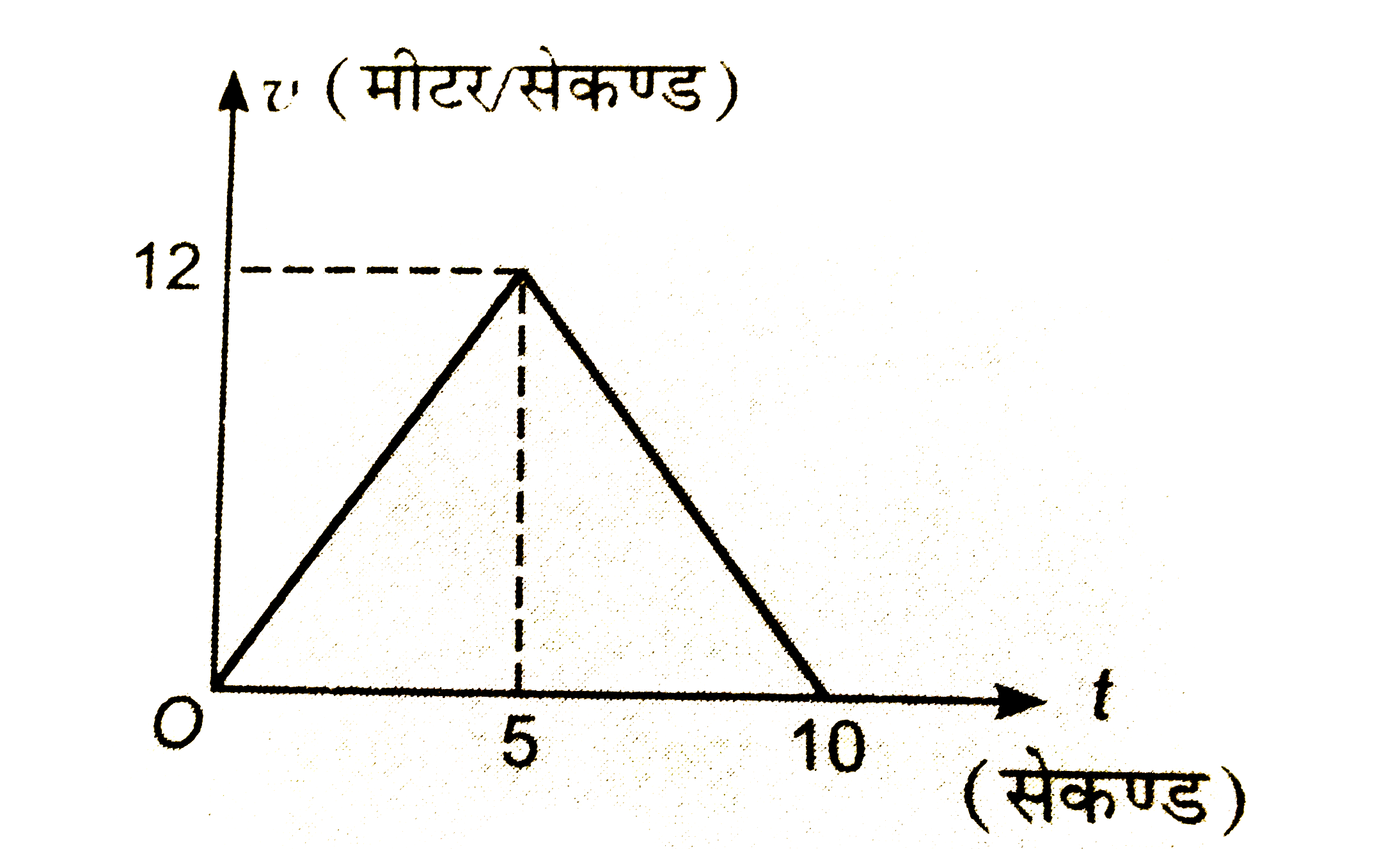The distance time graph of a body is as shown in Figure. In which portion
(i) velocity is maximum (ii) velocity is minimum (iii) velocity is zero ?
(i) velocity = slope of distance time graph, which is maximum for the portion AB, Fig.
(ii) velocity = minimum in the portion OA, because slope of OA is minimum, Fig.
(iii) velocity = zero in the portion CD, because slope of CD is zero,
Topper's Solved these Questions
- MOTIONBOOK - PRADEEPCHAPTER - MOTIONEXERCISE - (NCERT) multiple choice
11 Videos
- MOTIONBOOK - PRADEEPCHAPTER - MOTIONEXERCISE - Mock test
24 Videos
- MOTIONBOOK - PRADEEPCHAPTER - MOTIONEXERCISE - Formative Assessment 1(b) - Oral testing (Exercise)
1 Videos
- GRAVITATIONBOOK - PRADEEPCHAPTER - GRAVITATIONEXERCISE - Model Test paper (1)
36 Videos
- SOUNDBOOK - PRADEEPCHAPTER - SOUNDEXERCISE - Model Test (sec - B)
12 Videos
Similar Questions
A particle moves in a circle of radius R. In half the period of revolution its displacement is …………… and distance covered is …………... .
View SolutionStatement I: A body can have acceleration even if its velocity is zero at a given instant .
Statement II: A body is momentarily at rest when it reverses its direction of velocity.
View SolutionThe distance time graph of a body is a st. line making an angle of 30∘ with time axis. What is speed ?
View SolutionAn object has moved through some distance. Can its displacement be zero ?
View SolutionThe readings of the spring balance will be :

View SolutionA body starts from rest at time t = 0 , the acceleration time graph is shown in the figure . The maximum velocity attained by the body will be
View SolutionThe displacement-time graph of a body is shown in.
 .
.
The velocity-time graph of the motion of the body will be .
View SolutionIf velocity-time graph of a body is as shown in figure, what is the nature of motion ?
View SolutionA body A is at rest and body B is moving with a constant velocity. Draw (i) distance time graph of A and B (ii) velocity time graph of A and B .
View SolutionFrom the velocity-time graph of uniformaccelerated motion deduce the equations of motion in (i) velocity and time (ii) distance and time (iii) disstance and velocity.
View SolutionIn SHM at the equilibrium position
(i) displacement is minimum
(ii) acceleration is zero
(iii) velocity is maximum
(iv) potential energy is maximum
View SolutionThe velocity-time graph of a body moving in a straight line is shown in the figure.
View Solutionएक गतिमान कण का वेग समय ग्राफ चित्र में प्रदर्शित है-

(i) किस क्षण कण का वेग न्यूनतम है?
(ii) किस क्षण कण का वेग अधिकतम है?
(iii) t=0 से t=10 सेकण्ड के समयान्तराल में कण द्वारा तय दूरी तथा इसकी औसत चाल क्या है?
View SolutionVelocity versus time graph of a body is shown in figure. It explains that

View SolutionThe a -t graph is shown in the figure. The maximum velocity attained by the body from rest will be

View Solution
